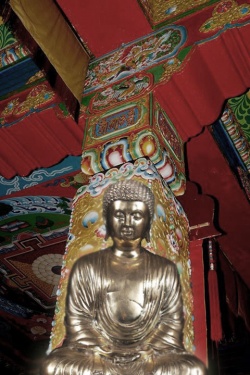Difference between revisions of "Martial Arts"
(Created page with "thumb|250px| Buddhist monks have been leaders in developing various forms of {{Wiki|martial arts}}. The Shaolin Order is perhaps the best...") |
|||
| Line 2: | Line 2: | ||
[[Buddhist]] [[monks]] have been leaders in developing various [[forms]] of {{Wiki|martial arts}}. The [[Shaolin]] Order is perhaps the best known of these, famed for their fighting prowess. {{Wiki|Martial arts}} would seem to be about as far from non [[violence]] as you can get, but [[Buddhist]] [[forms]] of {{Wiki|martial arts}} have very strict rules about how [[violence]] can be used. | [[Buddhist]] [[monks]] have been leaders in developing various [[forms]] of {{Wiki|martial arts}}. The [[Shaolin]] Order is perhaps the best known of these, famed for their fighting prowess. {{Wiki|Martial arts}} would seem to be about as far from non [[violence]] as you can get, but [[Buddhist]] [[forms]] of {{Wiki|martial arts}} have very strict rules about how [[violence]] can be used. | ||
| − | The [[Shaolin]] [[teaching]] forbids the [[monk]] from ever being the aggressor, and instructs him to use only the minimum necessary defensive force. By becoming [[skilled]] in [[physical]] conflict the [[monk]] has a better [[understanding]] of [[violence]] and is able to use sophisticated techniques to avoid harm, ranging from simple parrying of clumsy blows to paralysing grips and knockout blows in the face of extreme [[violence]] - but always using only the amount of force needed to refuse the [[violence]] that is being [[offered]] to them. Most {{Wiki|martial arts}} [[traditions]] have strong [[spiritual]] and [[philosophical]] [[elements]], and insist on a responsible and minimalist [[attitude]] to [[violence]]. | + | The [[Shaolin]] [[teaching]] forbids the [[monk]] from ever being the aggressor, and instructs him to use only the minimum necessary defensive force. By becoming [[skilled]] in [[physical]] conflict the [[monk]] has a better [[understanding]] of [[violence]] and is [[able]] to use sophisticated techniques to avoid harm, ranging from simple parrying of clumsy blows to paralysing grips and knockout blows in the face of extreme [[violence]] - but always using only the amount of force needed to refuse the [[violence]] that is being [[offered]] to them. Most {{Wiki|martial arts}} [[traditions]] have strong [[spiritual]] and [[philosophical]] [[elements]], and insist on a responsible and minimalist [[attitude]] to [[violence]]. |
{{R}} | {{R}} | ||
[http://www.wisdomlib.org/definition/martial-arts/index.html www.wisdomlib.org] | [http://www.wisdomlib.org/definition/martial-arts/index.html www.wisdomlib.org] | ||
[[Category:Martial arts]] | [[Category:Martial arts]] | ||
Latest revision as of 05:03, 10 September 2014
Buddhist monks have been leaders in developing various forms of martial arts. The Shaolin Order is perhaps the best known of these, famed for their fighting prowess. Martial arts would seem to be about as far from non violence as you can get, but Buddhist forms of martial arts have very strict rules about how violence can be used.
The Shaolin teaching forbids the monk from ever being the aggressor, and instructs him to use only the minimum necessary defensive force. By becoming skilled in physical conflict the monk has a better understanding of violence and is able to use sophisticated techniques to avoid harm, ranging from simple parrying of clumsy blows to paralysing grips and knockout blows in the face of extreme violence - but always using only the amount of force needed to refuse the violence that is being offered to them. Most martial arts traditions have strong spiritual and philosophical elements, and insist on a responsible and minimalist attitude to violence.
